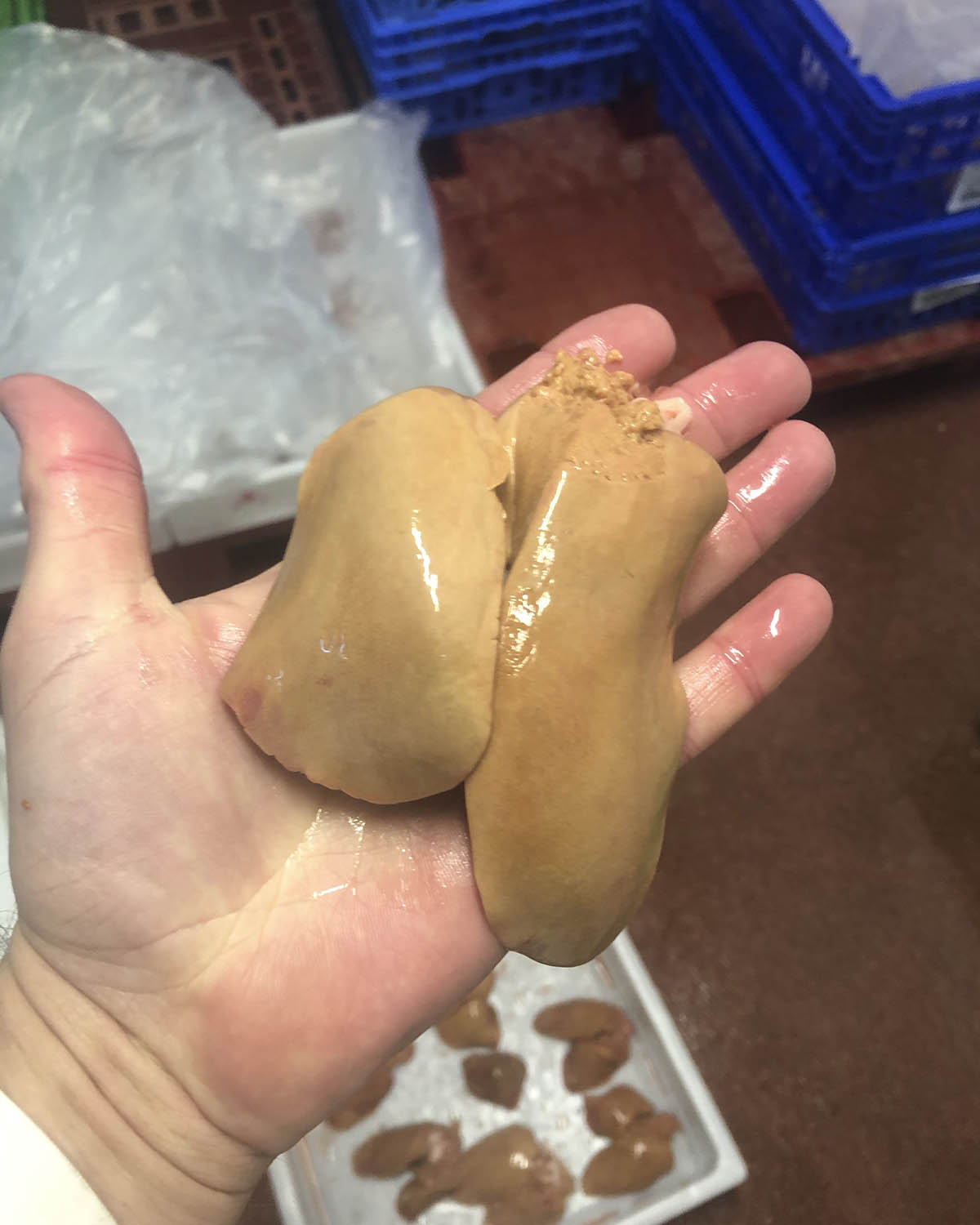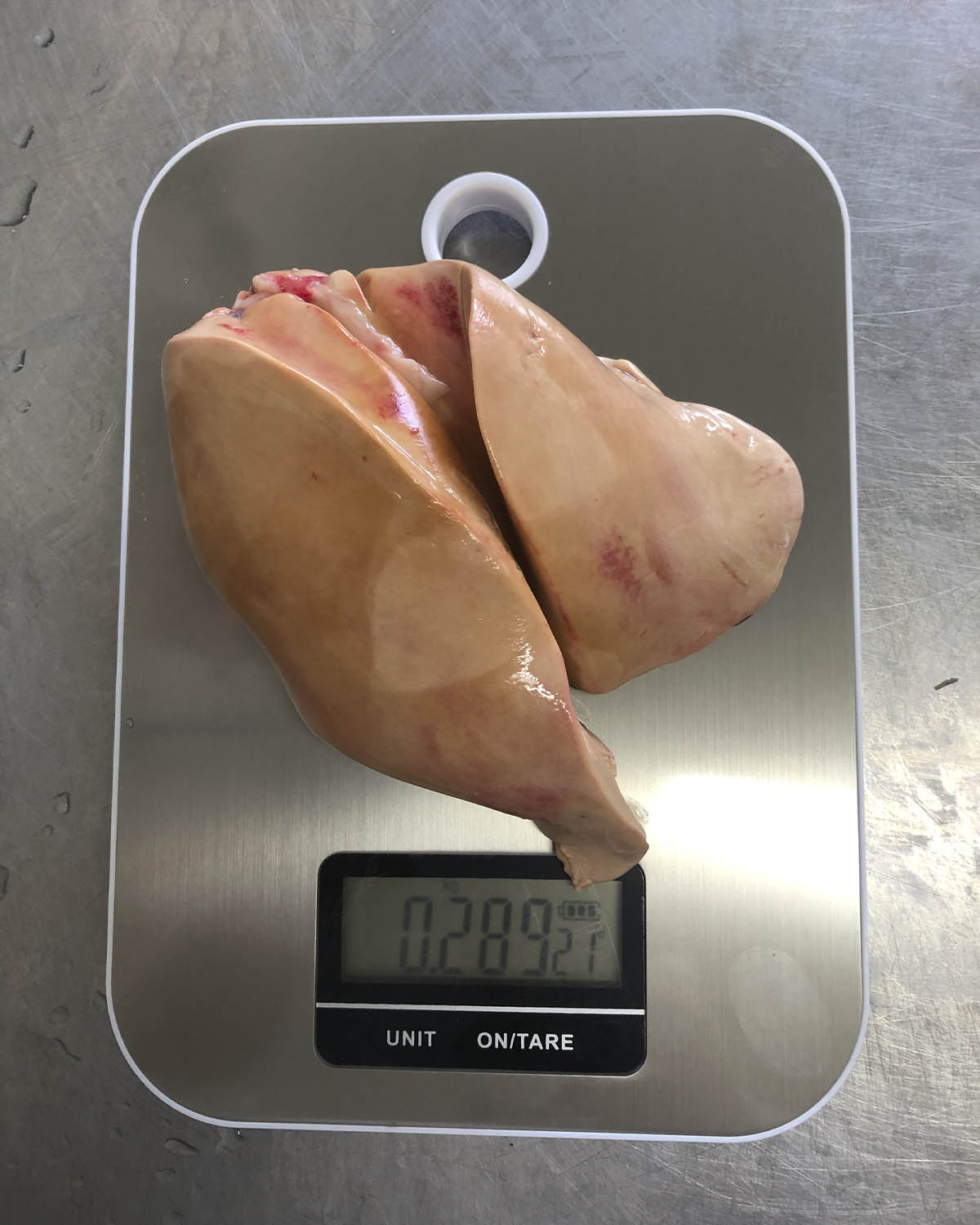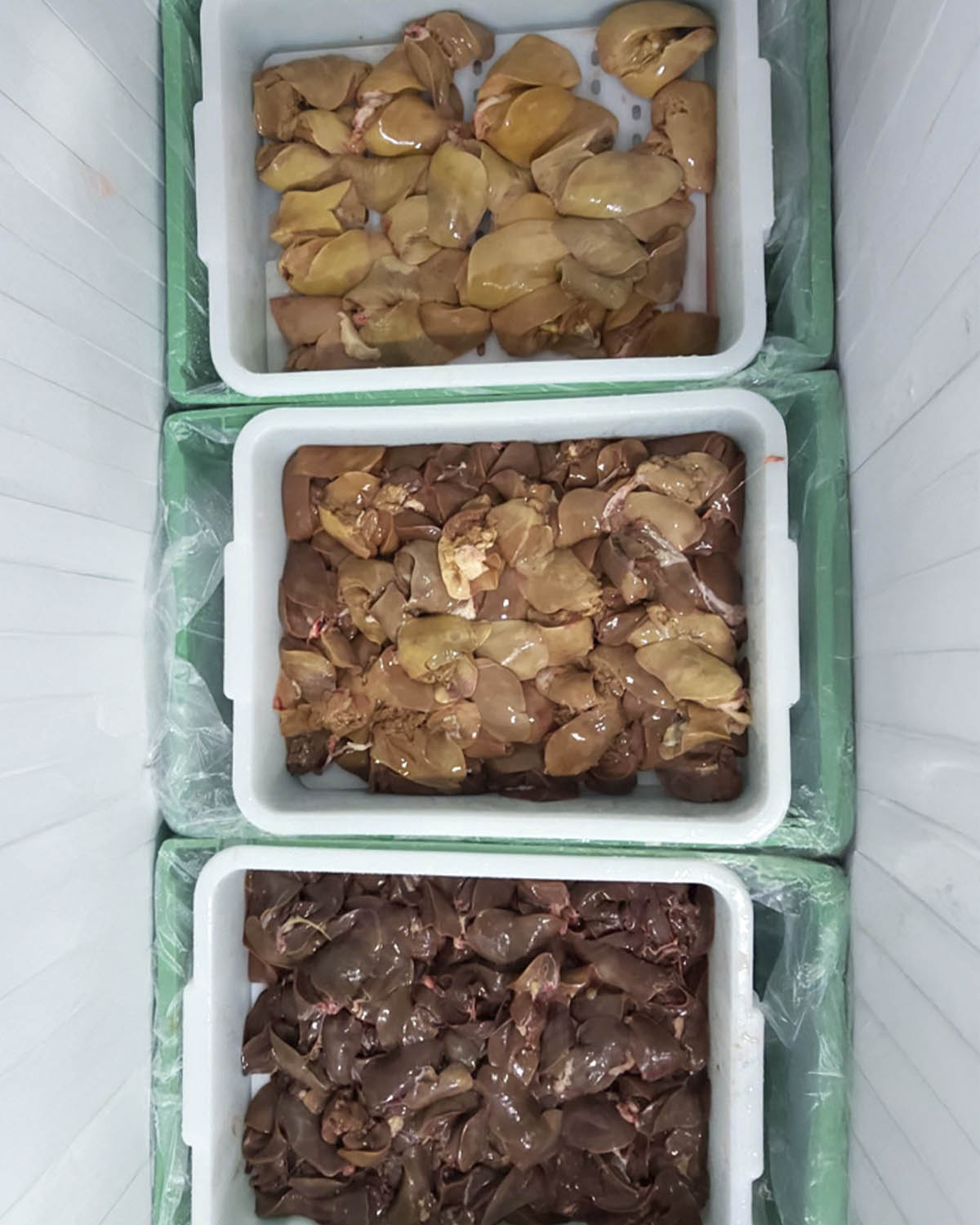When you’ve tried natural foie, some of the other foies will seem like cheap butterFoie without force-feeding
In wild web-footed birds, the natural accumulation of energy in the form of fat in the liver and meat (intramuscular fat) needs long periods of time. That’s why foie produced without forced feeding is more expensive than force-fed foie – it needs more time. Long, slow breeding cycles. Without the rush. When the cold arrives, the birds begin to deposit subcutaneous fat, then intramuscular fat and finally fat in the liver cells…
Foie produced by forced feeding quickly results in huge fatty livers, but these are weakened by the speed of fattening. With this unnatural process, each liver cell (hepatocyte) forms a gigantic fat vacuole inside it, which weakens and breaks down the cell wall. This process is called macrovesicular steatosis. When cooked, these foies often melt, releasing their fat quickly into the pan as the heat ruptures the very weak cell walls. The faster the fattening, the lower the quality of the foie and the more it melts when cooked.
Natural foie, obtained without force-feeding, is smaller and the process of fat accumulation in the cells is much slower and more natural. In this process, called microvesicular steatosis, multiple small vacuoles of fat form without causing damage to the cell wall. As a result, the foie doesn’t melt when cooked and offers unique aromas and nuances of flavour. A culinary gem, with nuances of the countryside and less fat than forced foie. A return to the origins of foie gras.
Foie Comparison



